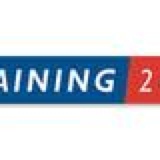Title Page
-
Customer Name
-
Address
-
Member Number
-
Conducted on
-
Conducted by
-
Next Planned Review Date
Introduction
-
The Regulatory Reform Order puts the responsibility on all businesses to carry out an organised appraisal of the work activities and the workplace to enable them to identify potential fire hazards and to decide who (including employees and visitors) might be in danger in the event of fire, and their location.
They then, have to evaluate the risks arising from the hazards and decide whether the existing fire precautions are adequate, or whether more needs to be done.
The consequences of not complying with fire safety requirements can be severe. Apart from the potential for loss of life, injury or damage to property, it may also lead to enforcement action being taken. The penalties are set out in legislation and will range from a fine to a custodial sentence and may, in extreme circumstances include both.
The Regulatory Reform Order allows the business to bring in a competent person to help carry out the risk assessment. This may be someone who has the necessary knowledge
or expertise to carry out this task, including someone who has already carried out a fire risk assessment or a fire safety specialist who is paid. However, if this is the case, the relevant person at the business is still legally responsible for the risk assessment.
The assessments, observations and recommendations reflect conditions observed on site at the time of the audit implementation and will be reviewed every 6 months or annually ever after.
OBJECTIVES
To identify hazards that can be removed or reduced and the risks that remains.
To identify existing fire precautions, evaluate and recommend additional and suitable fire prevention control measures to protect people against them.
The main purpose is protecting the lives and the health of people in the workplace in case of a fire incident, and -where possible - to reduce the damage to property and assets.
EXECUTIVE SUMMARY
Management are urged to review their current fire management system as a matter of urgency.
Recommendations have been made in this report to ensure statutory compliance by reducing risks to fire, as far as is reasonably practicable. That is at a reasonably cost having regard to the magnitude of risk.
The consequences to this company, its directors and employees of taking no action could be dire.
In the event were the activities will be suspended, closure or legal prosecutions leading to substantial fines, the company will be unable to insure against criminal action.
SUMMARY OF HAZARDS
Definitions:
Hazard: - something with potential to cause harm.
Risk: - the likelihood that harm from a particular hazard is realised.
Risk Assessment: - the evaluation of the likelihood that a hazard will cause harm which identifies and takes account of all significant factors, affecting the risk, and which in conclusion advises if/how the management of such risks to be improved to eliminate or lessen the chance of harm.
FIRE PRECAUTIONS
One of the primary aims of the current and pending legislation is to ensure that a proactive approach to the prevention of accidents is adopted.
The proactive measures fall into the following categories.
a) Identify hazards and assess risks: The audit carried out on: as dated and the contents of this report mean that you have now complied with this requirement.
b) Formulate and implement control measures to minimise risks: Procedures covering the areas detailed within this report, must be set down in a comprehensive safety manual.
c) Inform, instruct and train personnel: On site personnel must be trained in how to apply the procedures set out within the safety manual.
d) Monitor conditions to ensure that the control measures are being correctly implemented: Having implemented the recommendations contained within this report the premises should be reassessed in order that a Certificate of Compliance can be issued. Following which an annual reassessment should be undertaken to ensure that adequate control is being maintained.
In addition should the circumstances change significantly a reassessment would be required.
The report details the hazards, which were identified during the audit together with an assessment of the risk that these hazards present.
This section gives details of other statutory non-compliance, which, although they are statutory requirements, do not necessary present risk to the health and safety of the occupants and visitors of the building. However by virtue that they are statutory requirements, failure to comply could result in prosecution.
RISK ASSESSMENTS REPORT
Fire Risk Assessment:
As previously mentioned, the objective of a Fire Risk Assessment is to provide an environment which is safe from fire and which complies with Fire Safety Regulations. It is a dynamic process that requires management to continually assess fire hazards within the workplace and accordingly upgrade safety arrangements.
It is a comprehensive audit of workplace premises, processes and activities, which allows employers to provide and maintain adequate fire safety arrangements and can either be carried out as a separate activity or be incorporated into the existing workplace health and safety regime.
The essential steps to a Fire Risk Assessment are: -
1. Identify the fire safety hazards within the workplace
2. Decide who might be harmed and how
3. Evaluate the risks arising from the hazards and decide whether existing precautions are adequate and appropriate
4. Record the findings of the assessment and action taken (legal requirement where 5 or more persons are employed)
5. Review the assessment from time to time and revise it if necessary.
Risk Rating:
The Assessment produces an overall risk rating taking into account the potential of the hazard to cause harm and the likelihood that the hazard identified will cause harm. The application of the risk assessment rating is applied as follows.
Risk Weighting = Hazard Severity x Likelihood of Injury Occurring
Hazard Severity: H1 = Minor H2 = Serious H3 = Major H4 = Fatal
Likelihood: L1 = Insignificant L2 = Low L3 = Medium L4 = High
Priority:
Very High (VH): 12 – 16 = Death or Major injury is very likely.
Immediate action is required.
High (H): 8 - 9 = Foreseeable Serious Legal Consequences.
Requires urgent action
Medium (M): 3 - 6 = Areas of concern. Remedial action required ASAP.
Low (L): 1- 2 = Good Practice. Action might require in due course.
Who might be harmed? Employees, customers, visitors, contractors, building and environment
Priorities Explained
IMMEDIATE ACTION (VH):
These matters will require immediate action in order to alleviate imminent danger that could lead to major injury, even death of employees or others. The hazard identified will certainly be the result of a statutory contravention and would lead to action from the enforcing authorities whether this is legal proceeding, a prohibition notice or an improvement notice
URGENT ACTION (H):
These matters will require urgent action in order to alleviate imminent risk to health, safety and welfare of employees or others. The hazard identified will almost certainly be the result of a statutory contravention and could lead to action from the enforcing authorities whether this is legal proceeding, a prohibition notice or an improvement notice
ACTION AS SOON AS POSSIBLE (M):
These matters will require prompt action in order to alleviate the risk, which may be serious in outcome, but not creating and imminent danger. The hazard identified will probably be the result of a statutory contravention or a deviation from the approved guidance such as approved codes of practice or HSE guidelines. These matters could lead to action from enforcing authorities, although it is likely that an improvement notice would be the strongest penalty.
ACTION IN DUE COURSE (L):
These matters should be addressed in due course in order to minimise the risks to the health, safety and welfare of employees and others. These hazards may not require immediate attention either due to the low risk of damage/ill health or due to proposed changes of legislation or implementation periods as stated in the relevant legislation. These matters are unlikely to result in prosecution or legal proceedings. Although an imminent risk is not evident the desired improvements and precautions should programmed into a risk management programme.
-
Walk Around Fire Safety Checklist – To be completed on each visit and saved in ZIP File
General Fire Safety
-
Are fire & emergency procedures (instructions) for the premises displayed throughout the workplace?
-
Are fire drill and full evacuation carried out and recorded in the fire logbook? If so, how frequent? Are the outcomes discussed with staff?<br>
-
Are all internal fire doors clearly labelled, fitted with self-closing devices and kept closed at all times?
-
External waste/rubbish might put the building at risk of arson. Are bins, skips, and other combustible material lockable and stored at least 8m away from the building to protect against risk of arson?
-
Are all flammable substances (aerosols, liquids and solids) combustible materials stored safely? Give examples
-
Are the gas appliances (fixed or portable) and pipe work positioned at a safe distance from any combustible materials and suitable guarded?
-
Is the workplace free of rubbish, wastepaper or other materials which could catch fire or be set alight?
-
Are “No Smoking” signs displayed with suitable facilities for the disposal of smoking materials in designated area?
-
Evacuation / Assembly point adequately signed?
Means of Escape
-
Are there sufficient number of fire exits (differing directions) that lead to a safe place of safety
-
Fire Alarm in place / call points / Air Horn / Klaxon etc (type)
-
Are all gangways, floors and safe routes of passage free from slips, trips & obstruction? (internal & external)
-
Can all fire safety signs and fire exit notices be clearly seen?
-
Are fire exits lit, regularly checked and documented?
-
Are all fire exits/doors used for means of escape purposes opened without the use of a key and opened easily
-
Are there suitable procedures in place for the evacuation of disabled persons? Give example
Lighting
-
Has the need for Emergency Escape Lighting been considered and installed in accordance with BS5266 – Part 1:2016?
Fire Instructions
-
Have the employees been instructed to take reasonable care of themselves and others who may be affected of their acts or omissions at work? (i.e.: while welding).
-
Is there a plan for fire marshals or a responsible person to include the specific duties of named employees in case of full evacuation due to fire, followed by fire marshals debriefing?
-
Has a procedure been established to review the fire risk assessment periodically?
Fire Fighting
-
Is there sufficient fire fighting equipment of the correct type? List the types of extinguishers
-
Are portable fire extinguishers, fire blankets, etc. suitable located and available for use with fire user signage (types of fire it can and cant be used on) visible?
-
Have the portable fire extinguishers been serviced to BS5306 – part 3 standards within the last year and has the relevant certification being obtained?
-
Have the employees been shown the correct use of fire blanket and the use of fire extinguisher and do they know which extinguisher to use on which fire?
Fire Alarm
-
Is the installation of the Fire Alarm system as specified in the current BS5839 part 1, to at least category L4 or to an equivalent standard?
-
Are the Fire Alarm and detection devices inspected by a competent person to BS5839 standards?
-
Are the call points unobstructed, clearly visible, tested weekly and documented?
-
Are the Fire Alarm sirens (i.e. howlers) in the region of 118db with visual warning light and adequate in numbers, wall mounted next to or near to Fire Exits?
-
Are Smoke/Heat Detectors installed where necessary and are in accordance with BS5445 and BS5446? Are they regularly inspected & tested and have records available for inspection?
Additional Information
-
Signatures
-
Member Signature
-
Auditor Signature
-
Date completed











